Australia’s proud prune heritage
Australia has grown prunes for more than 100 years
1892
The first known reference to prunes in Australia was recorded in June 1892 when the Camden Park Orchard of the Macarthur’s was awarded 1st prize in the 1891 National Prize Competition for orchards over 10 acres. The record refers to the original Prune d’Agen, the famous French dried prune of commerce, which was imported by Sir William Macarthur in 1866.
The prune had been extensively propagated at Camden Park, approximately 50km south west of Sydney, and was seen as potentially a “great source of wealth”.
1893
A further reference in the 1893 Agricultural Gazette mentions the sale of nursery trees and prune growing in the Albury region of NSW as early as 1861, but these are not thought to have been used for commercial purposes.
1901
In 1901, a crop was harvested from trees planted by the Department of Agriculture near Bourke in far western NSW.
During the early 1900s there were several plantings recorded between Koorawatha and Greenthorpe, between Young and Cowra in NSW.
Prunes were also included in some First World War soldier settlement blocks at Kunama, near Batlow. Although the crop produced well in such a cool climate (elevation 1000 metres), the high rainfall was not conducive to sun drying and the industry failed to develop.
1927
The first sizeable crop in NSW was harvested in 1927, with a recorded production of 1000 tonnes. Since then, NSW has dominated prune production with over 90 per cent of annual crops grown in Australia’s most populous state.
The only plantings outside NSW are in South Australia, mainly in the Riverland, Barossa and Clare Valley regions. The first plantings in South Australia were by the Evans Family at Evandale. Other orchards were established at Keyneton and Mexican Valley, also in South Australia.
Prunes is the young district
A 50g serve or about 6 prunes contains less than 1g of unhealthy saturated fat. Healthy, varied diets low in saturated fat and high in fruits and vegetables, help reduce blood cholesterol and contribute to heart health.
Sodium and potassium are electrolytes involved in blood pressure regulation. A healthy diet, low in sodium that contains a variety of foods also reduces blood pressure.
Prunes are naturally low in sodium with 6 prunes containing just 1mg of sodium and 375mg of potassium.
Prunes also contain soluble fibre which may help reduce bile acid/cholesterol reabsorption from the intestines.
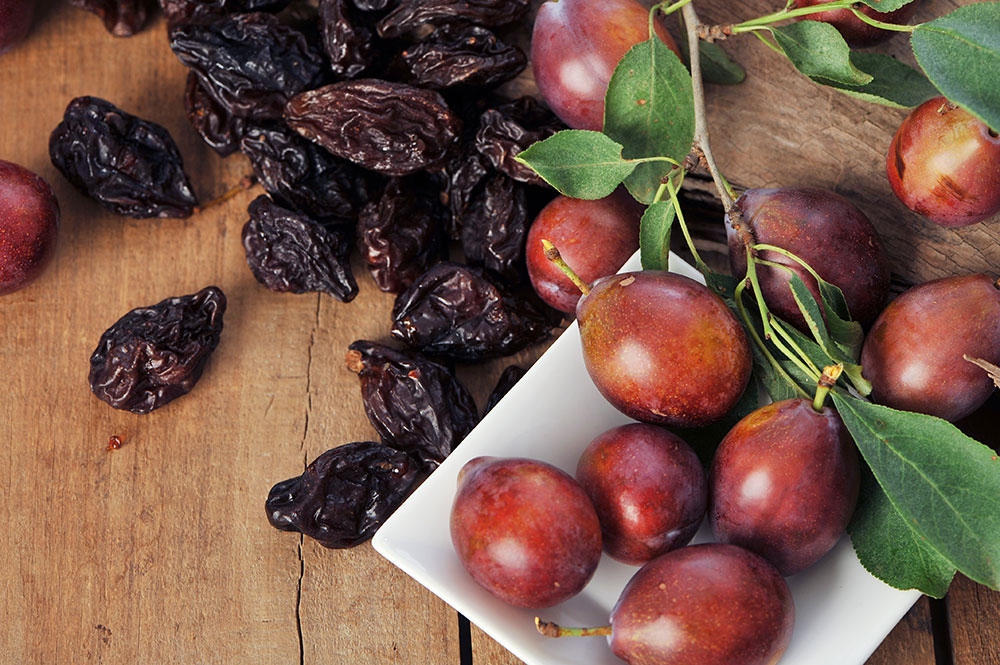
Prunes is the young district
A 50g serve or about 6 prunes contains less than 1g of unhealthy saturated fat. Healthy, varied diets low in saturated fat and high in fruits and vegetables, help reduce blood cholesterol and contribute to heart health.
Sodium and potassium are electrolytes involved in blood pressure regulation. A healthy diet, low in sodium that contains a variety of foods also reduces blood pressure.
Prunes are naturally low in sodium with 6 prunes containing just 1mg of sodium and 375mg of potassium.
Prunes also contain soluble fibre which may help reduce bile acid/cholesterol reabsorption from the intestines.
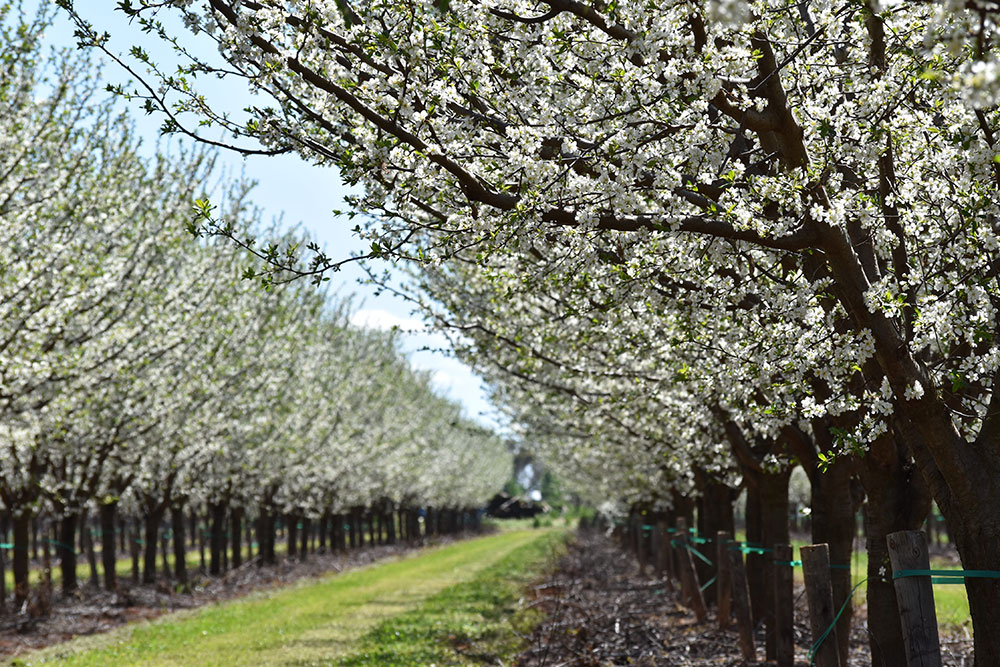
The industry in the MIA
The first plantings in the Murrumbidgee Irrigation Area were in 1912 following the establishment of the settlement in the Riverina.
Initial plantings included the First World War Soldier Settlement scheme when prunes were included in blocks at Corbie Hill, near Leeton and at Lake Wyangan, near Griffith.
Further plantings around Yenda, Yoogali and Hanwood saw a very gradual expansion of the industry in the area. It wasn’t until the 1980s that considerable expansion of the industry took place.
There are roughly 770 hectares of prune plantings in Australia.
Dehydration
The first method of dehydration used was sun drying, but this produced a variable product. The first dehydrators used a wood fire to heat a flue pipe running the length of the drying chamber. Convection currents from this pipe achieved drying.
Oil fired burners were introduced after World War II and incorporated parallel flow dehydration with greatly improved efficiency. Next came the LP gas burners, giving a much cleaner operation.
Now, natural gas is used to dry almost 100% of all Australian prunes. There is one boutique sun drying operation located in Yenda, NSW.
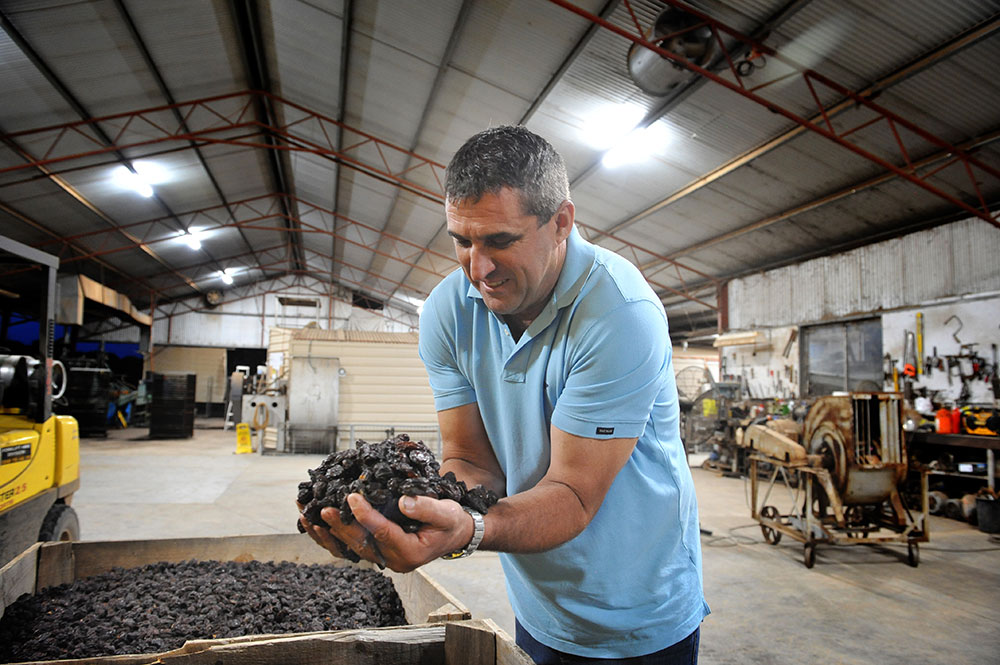
Dehydration
The first method of dehydration used was sun drying, but this produced a variable product. The first dehydrators used a wood fire to heat a flue pipe running the length of the drying chamber. Convection currents from this pipe achieved drying.
Oil fired burners were introduced after World War II and incorporated parallel flow dehydration with greatly improved efficiency. Next came the LP gas burners, giving a much cleaner operation.
Now, natural gas is used to dry almost 100% of all Australian prunes. There is one boutique sun drying operation located in Yenda, NSW.
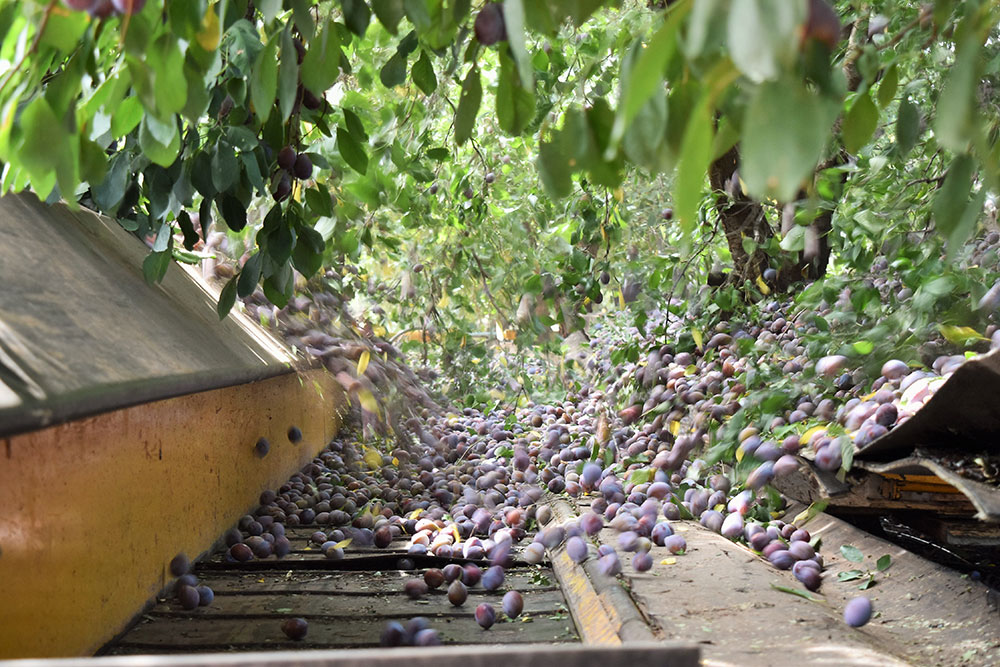
Mechanical harvesting
The first attempts at replacing hand picking with mechanical harvesting took place at Young in about 1963 using limb shakers and mobile catching frames.
This practice developed rapidly and by the 1970s most growers used some form of mechanical harvesting. Most of this development took place at Griffith where locally produced, as well as imported, machinery is widely used.
A mechanical shaker grabs a tree’s trunk and, in a matter of seconds, shakes the fruit onto a catching frame underneath. These machines are literally called ‘the shaker’ and ‘the catcher’.
Industry organisation
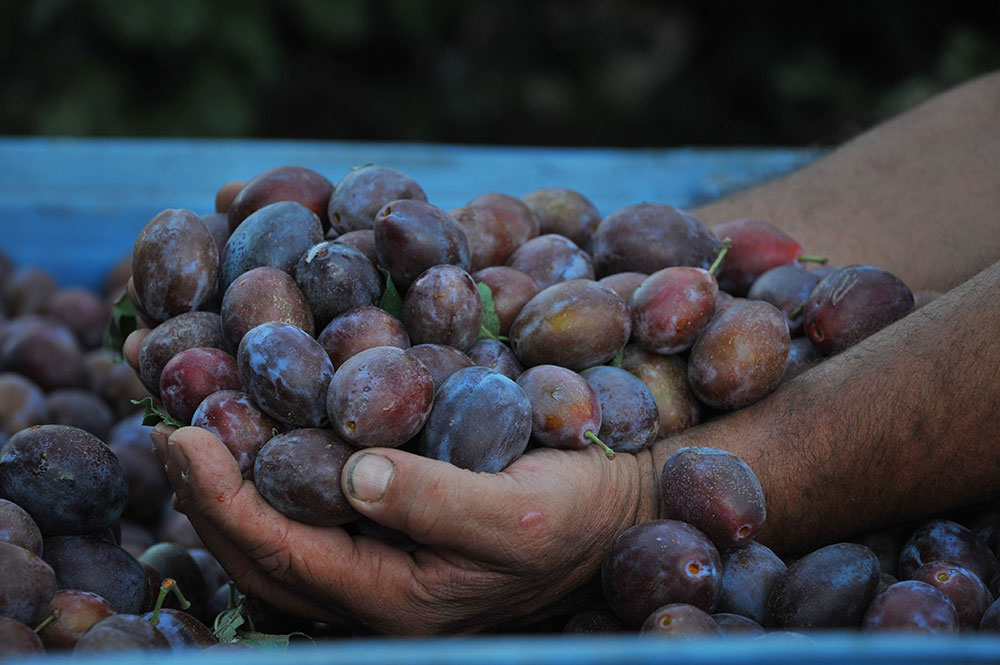
Industry organisation
The Prune Growers Association of NSW was known to have been operating as early as 1926. In 1927 the NSW Dried Fruits Board was established via an Act of Parliament. The Board was originally restricted to dried vine fruits but in 1934 was extended to include prunes and other dried tree fruit.
Aus Prunes, formally known as Australia Prune Industry Association, was established in XXXX. Aus Prunes represents producers and packers on a national and international stage.
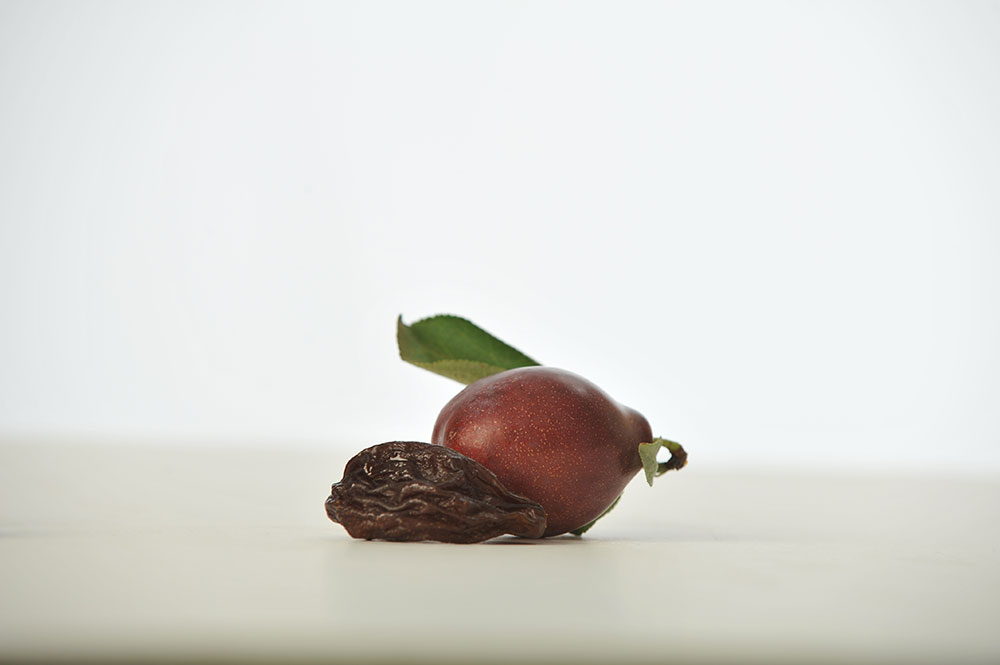
Production history
In the late 1920s production and sales of about 1,000 tonnes was recorded and rose to a peak of 5,000 tonnes in the 1960s. A significant drop in production over the following years followed, however the figures have steadily improved since 2002.

